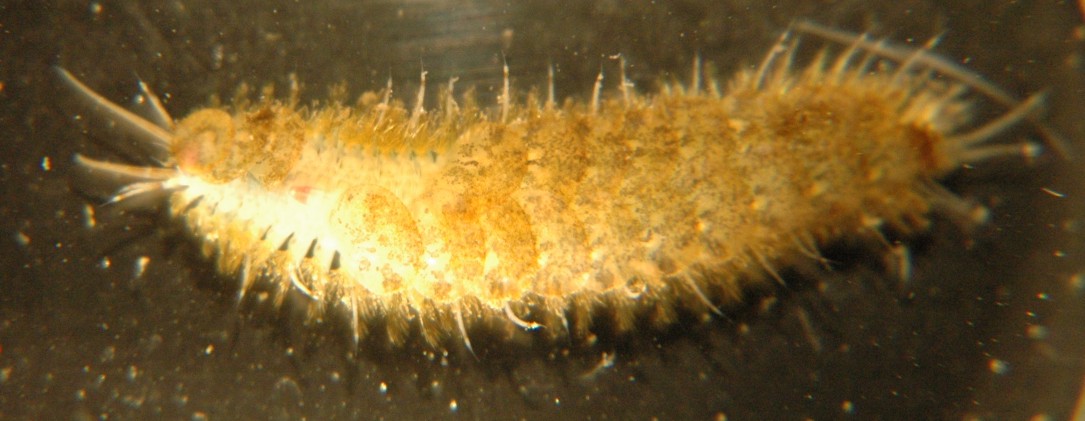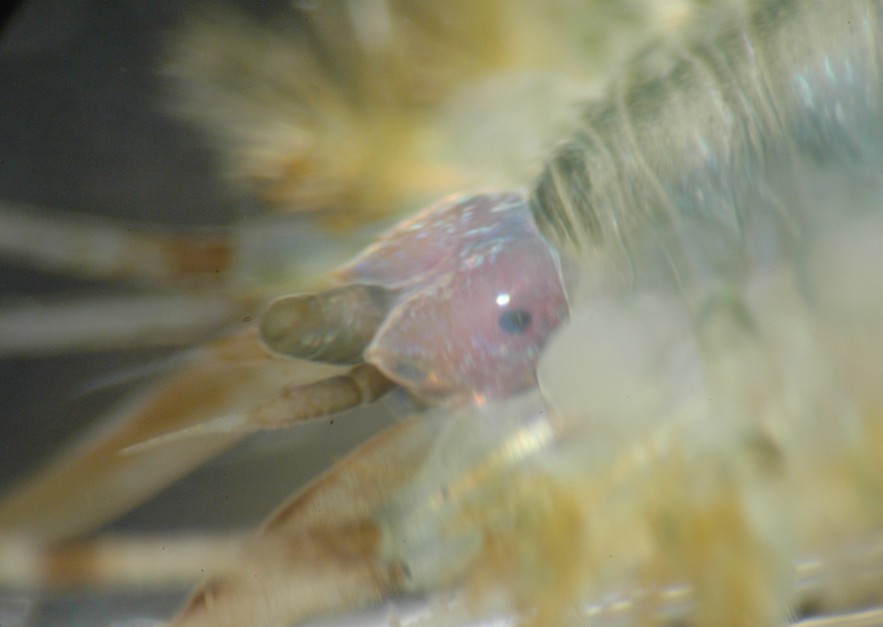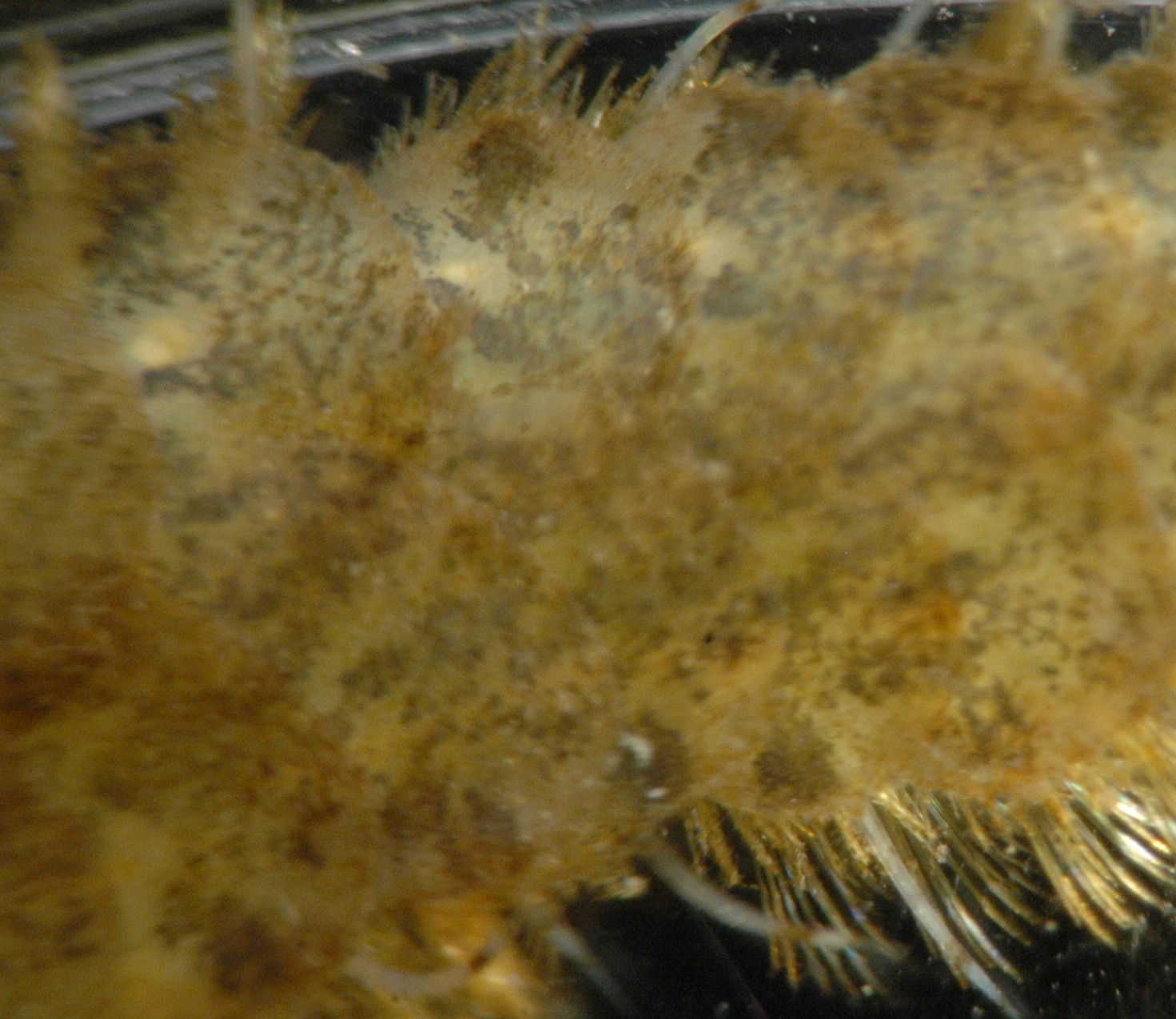Harmothoe imbricata (Linnaeus, 1766)Common name(s): Fifteen-scaled worm, Free-living scaleworm |
|
| Synonyms: Aphrodita imbricata |  |
|
Phylum Annelida
Subclass Palpata
Order Aciculata
Suborder
Phyllodocida
|
|
| Harmothoe imbricata, about 3 cm long. A few of the anterior elytra have fallen off this individual, revealing the segments underneath. This individual was living within the tube of another polychaete in Fidalgo marina. | |
| (Photo by: Dave Cowles, July 2009) | |
How to Distinguish from Similar Species: Several other species of Harmothoe have anterior eyes that are visible dorsally. Other Polynoids may have other numbers of elytra.
Geographical Range: A very widely distributed species. Found throughout the northern hemisphere. Point Barrow, Alaska to s California on our coast.
Depth Range: Low intertidal to 3710 m
Habitat: Lives in a wide variety of habitats: Freeliving intertidally under rocks and in eelgrass; subtidally in kelp holdfasts or mussel beds. May live commensally with echinoderms or other polychaetes.
Biology/Natural History: This scaleworm is very common in some parts of its range, such as California and SE Alaska. It is an active swimmer and can live in a wide range of salinities. The species is a predator which lies in wait, then pounces on its prey, using its large, jawed proboscis to subdue them. Amphipods are common prey. It also eats some algae.
The pink eggs are released from the nephridiopores. In some areas, females of this species brood their eggs under the elytra; in other places they do not seem to do so. Brooding in our area usually takes place in summer. Larvae may have a long pelagic period or direct development.
Polychaetes this species may live commensally with
include Thelepus
crispus, Neoamphitrite
robusta, and Diopatra
ornata.
| Return to: | |||
| Main Page | Alphabetic Index | Systematic Index | Glossary |
References:
Dichotomous Keys:Carlton, 2007
Kozloff, 1987, 1996
General References:
Kozloff,
1993
Lamb
and Hanby, 2005
O'Clair
and O'Clair, 1998
Scientific Articles:
Web sites:
General Notes and
Observations: Locations,
abundances, unusual behaviors:

This oblique view of the head shows the posterior eyes, which are
visible
dorsally, plus the anterior pair of eyes which are covered over by a
flap
of the prostomium.
The two lateral prostomial
antennae are seen to be inserted ventral to the median
antenna. The
anterior elytra
were
removed for this view.

The elytra
are fringed
with fine papillae,
especially along the posterior edges (to the right in this photo).
Authors and Editors of Page:
Dave Cowles (2009): Created original page
CSS coding for page developed by Jonathan Cowles (2007)